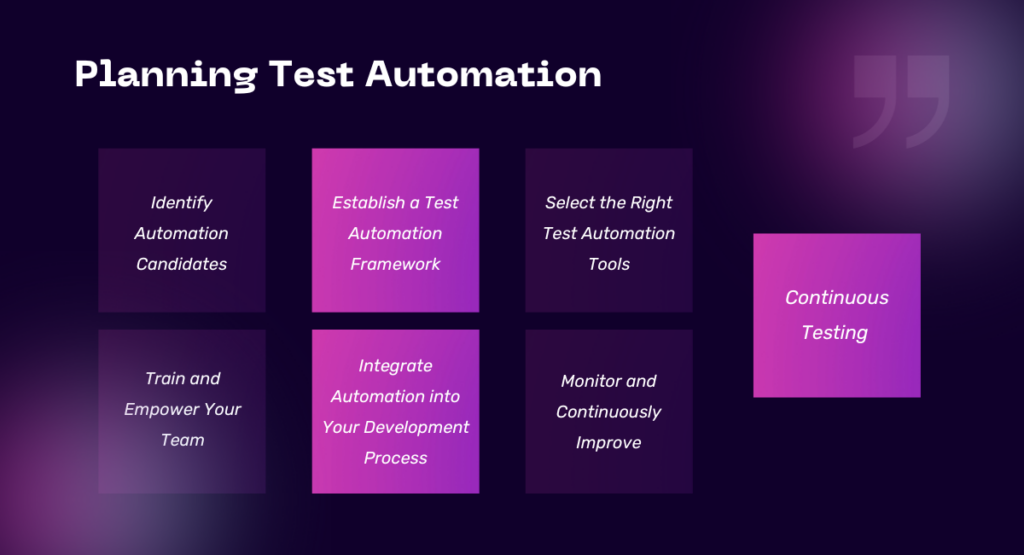Test automation tools play a pivotal role in the software development lifecycle by automating the process of executing test cases, verifying expected outcomes, and ensuring the functionality and reliability of software applications.
These tools are designed to increase efficiency, reduce time-to-market, and enhance the accuracy of testing processes.
By automating repetitive and time-consuming testing tasks, development teams can achieve faster feedback on code changes, streamline regression testing, and improve overall software quality.
Test automation tools come in various forms, catering to different testing needs, including functional testing, performance testing, and mobile testing.
They often feature scripting capabilities, record-and-playback functionality, and integrations with development and continuous integration tools, providing comprehensive support for a range of testing scenarios.
As technology continues to advance, the landscape of test automation tools evolves, offering developers and QA teams a diverse array of options to choose from based on their specific requirements and project needs.
Why Test Automation Matters

Manual testing, the traditional approach to software testing, involves human testers meticulously executing test cases to identify bugs and ensure software functionality.
While manual testing has its place, it is often time-consuming, labor-intensive, and prone to human error. Test automation tools address these limitations by automating test execution, offering a range of benefits:
Increased Testing Speed:
Automation dramatically reduces testing time, allowing teams to test more frequently and identify defects earlier in the development cycle.
Improved Testing Coverage:
Automation enables comprehensive testing of complex applications, covering a wider range of test scenarios and increasing test coverage.
Reduced Human Error:
Automation eliminates manual errors, ensuring consistent and reliable testing outcomes.
Enhanced Testing Efficiency:
Automation frees up testers to focus on higher-level testing activities, such as exploratory testing and test strategy development.
With Artificial Intelligence (AI) and Machine Learning, the automated testing sector finds itself presented with a remarkable chance to evaluate diverse cutting-edge technical applications.
In recent times, rule-based software has been instrumental in overseeing the majority of commercial processes. The surge in digital transformation has significantly increased the demand for software testing.
A study indicates that global spending on digital transformation is expected to surpass USD 1.3 trillion in 2020, reflecting an annual growth rate of 10.4%.
Choosing the Right Test Automation Tool

With a plethora of test automation tools available, selecting the right one for your organization is crucial. Consider factors such as:
Application Type:
Choose a tool that supports the type of application you are testing, whether it's a web application, mobile app, API, or desktop application.
Testing Scope:
Determine the scope of your testing needs and choose a tool that can handle the complexity of your test cases.
Integration Capabilities:
Ensure the tool integrates seamlessly with your existing development and testing tools and processes.
User Interface:
Choose a tool with an intuitive user interface that is easy to learn and use.
Scalability:
Select a tool that can scale with your growing testing needs and application complexity.
Planning Test Automation

Identify Automation Candidates:
Analyze your existing test suite and prioritize test cases for automation based on frequency, complexity, and impact.
Establish a Test Automation Framework:
Define a clear framework for managing automated tests, including test case creation, execution, reporting, and maintenance.
Select the Right Test Automation Tools:
Evaluate and choose the test automation tools that align with your specific requirements and technical expertise.
Train and Empower Your Team:
Provide training to your testing team on the chosen automation tools and methodologies.
Integrate Automation into Your Development Process:
Integrate automated testing into your CI/CD pipeline to ensure continuous testing and early defect detection.
Monitor and Continuously Improve:
Continuously monitor the performance and effectiveness of your automated tests, making adjustments as needed.
Continuous Testing
The landscape of test automation is constantly evolving, with new technologies and approaches emerging. Here are some current trends and thought leader insights:
- AI-Powered Test Automation: Artificial intelligence (AI) is being integrated into test automation tools to enhance test case generation, defect detection, and predictive analytics.
- Codeless Testing Automation: Codeless testing platforms are gaining traction, enabling testers with limited or no programming experience to create and execute automated tests.
- Continuous Testing and Integration: Continuous testing and integration (CI/CD) practices are becoming increasingly prevalent, with automated testing playing a central role in ensuring continuous software delivery.
Industry experts emphasize the importance of a strategic approach to test automation, emphasizing the need for clear goals, continuous improvement, and integration with overall development processes.
Book a Demo and experience ContextQA testing tool in action with a complimentary, no-obligation session tailored to your business needs.
Power Up
Test automation tools have become indispensable for modern software development, enabling teams to deliver high-quality products faster and more efficiently.
By carefully selecting the right tools, establishing a robust framework, and continuously improving their automation practices, organizations can harness the power of test automation to achieve their software quality goals.
Embrace the power of test automation and propel your software development journey to new heights of quality and agility.
You may also be interested in: Streamline Your Testing Process: Reduce Manual Testing by 60%
